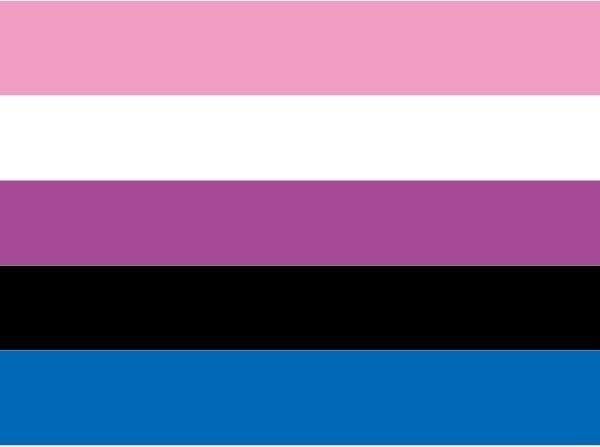


When we say independent, we mean that one does not influence the other. Sexual orientation and gender identity are two independent components of one’s identity. To date, there are about 15 alternative versions of the genderfluid pride flag on the Gender Wiki.
#Bisexual and gender fluid flag free#
While Poole’s flag has been more or less accepted as the de facto genderfluid pride flag, it’s important to note that there is no single organizational body that decides which flags become official symbols for the community.Īs such, people are free to create their own flags and symbols. “The fluidity and change experienced by persons with this identity are represented by the wave pattern of the lines.” In my research for making this image, I came across a hilarious version of the gender fluid flag that is wavy 😭 There is another similar flag featuring an additional three colors – light pink, light purple, and light blue – all set in waves. The waves are said to represent the fluidity and change experienced by those who identify as genderfluid. Created by LGBTA wiki user “FruitIndividual”, the flag features four colors – pink, white, purple, and blue – set in alternating wave patterns instead of straight stripes. Purple: Representing a combination of femininity and masculinity Īnother popular genderfluid flag that’s gaining traction in the community is the wave flag.Poole is an agender pansexual from New York state who designed the flag to represent all the possible gender identities that genderfluid people may identify with. The most popular genderfluid pride flag that is used today is a five-color flag created by JJ Poole in 2012. Shutterstock What Is The Genderfluid Flag? The bottom line? You can’t really infer someone’s gender based on their appearance! Genderfluid people may choose to express themselves the way they identify currently, or they may choose not to reflect their current gender identity through their clothing and behavior. This means that how you like to present yourself on the outside may not necessarily reflect how you feel inside. A genderfluid person may feel more male or more masculine one day, more feminine the day after, or neither the next day.Īnother thing to remember is that gender expression and gender identity are independent of one another. Their gender identity may change over years, months, weeks, or even days. So, a bigender person can identify as male and female at the same time.Ī genderfluid person, on the other hand, is someone whose gender identity is in a constant state of flux. Bigender people identify with two distinct genders, usually simultaneously. In other words, they don’t identify with any particular gender. Agender people often describe themselves as genderless. Not all NB people are genderfluid, however. Non-binary is also considered an umbrella term for several gender identities, including agender, bigender, and, yes, genderfluid. Non-binary (NB) people see gender as a spectrum – a vast expanse where they can identify somewhere in between or outside of the gender binary altogether. They’re called non-binary because they don’t identify with the traditional binary understanding of gender (as in male or female only). Then, there are non-binary people – people who do not identify exclusively as men or women. Those who fall into the former camp are called “cisgender” while those who fall into the latter can be described as transgender. Your gender identity can be the same as your sex assigned at birth (the sex that a doctor describes you upon birth based on your external anatomy) or it can also be different. Gender identity is defined as a person’s innermost concept of self – be it male, female, neither, or something in between.


 0 kommentar(er)
0 kommentar(er)
